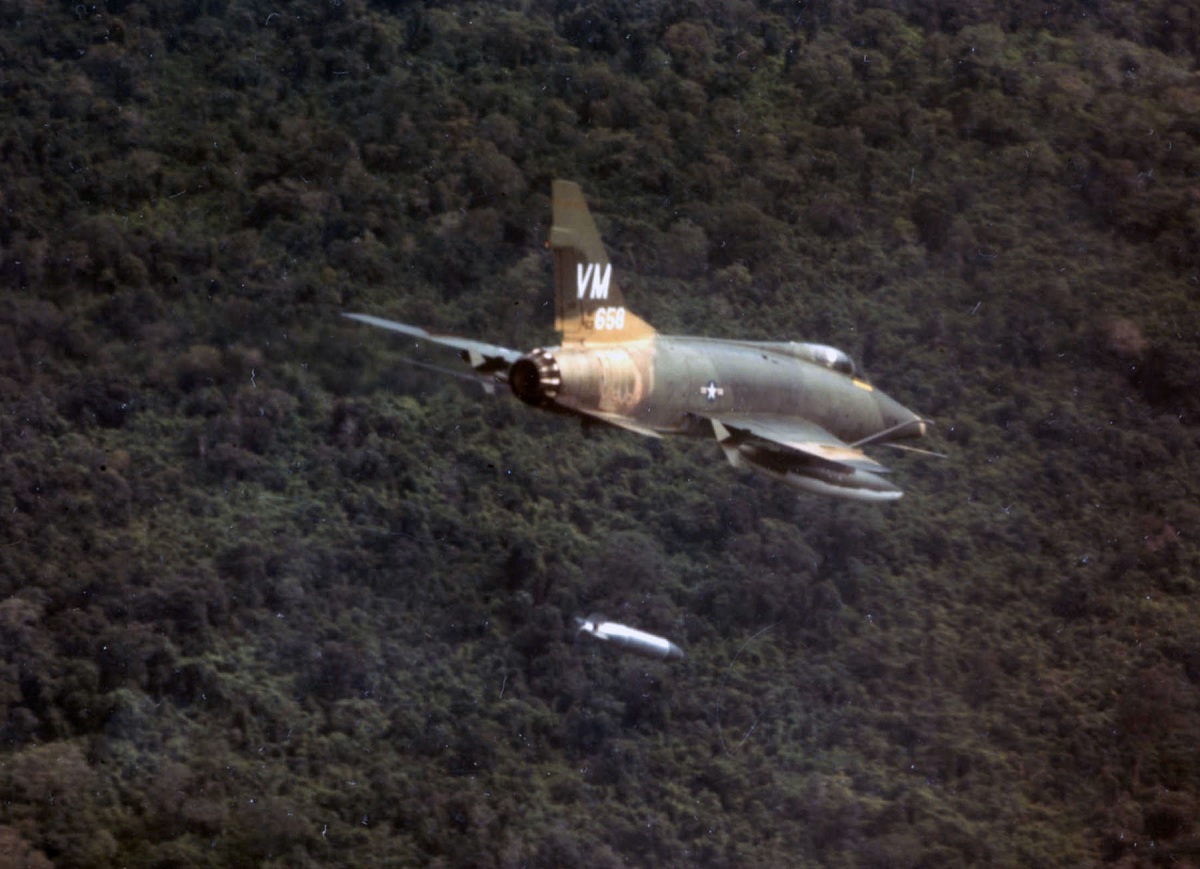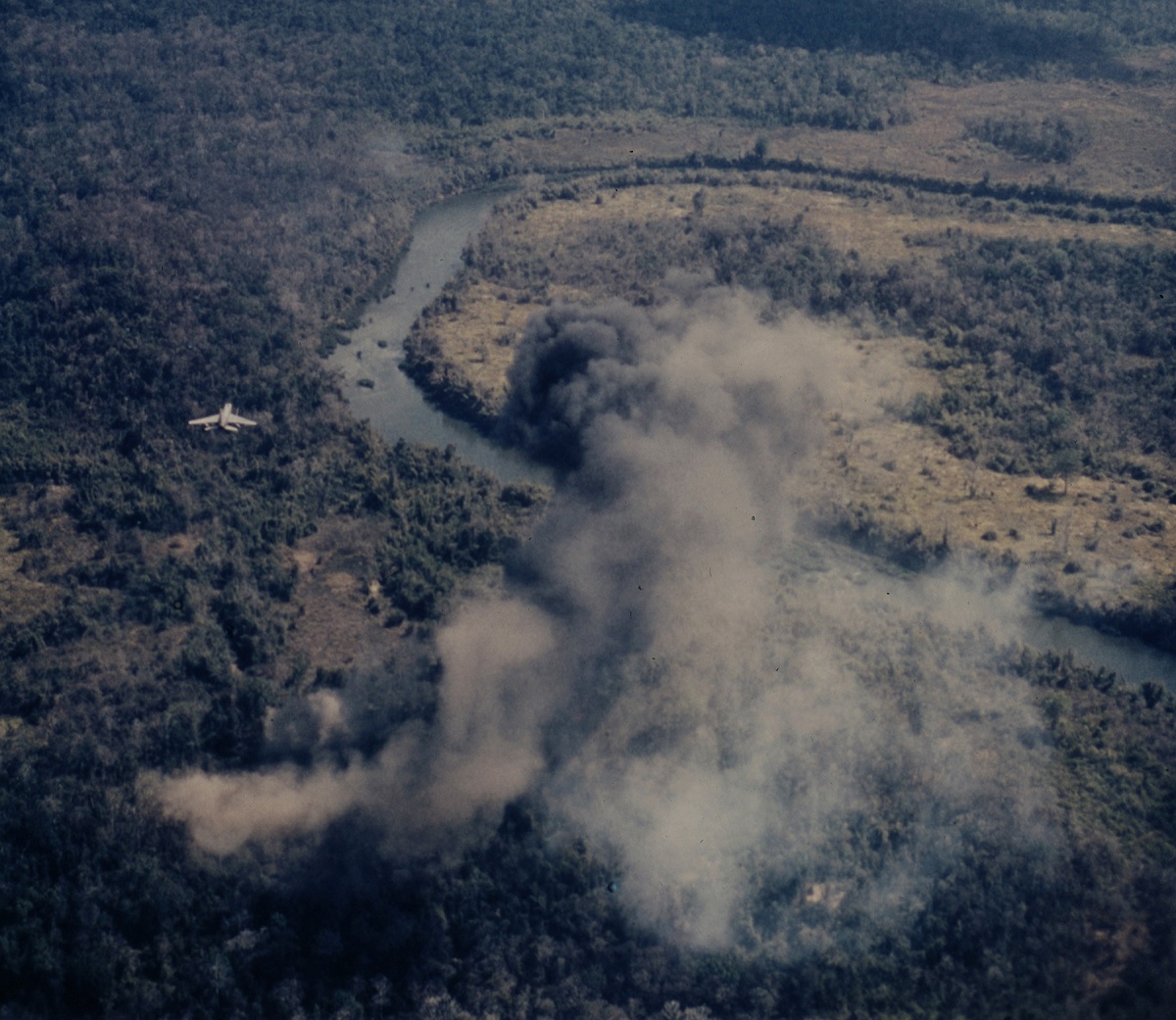The enemy gunners, undaunted by the repeated attacks, had continued to put up a fierce defensive fire. But the elusive tactics of the two Hun drivers had prevented a single enemy shell from finding the vitals of their mounts
The F-100 was the U.S. Air Force’s first production aircraft capable of exceeding the speed of sound in level flight (760 mph). It was created as a successor to the F-86 Sabre deployed in the Korean War. The YF-100A prototype took off for the first time on May 25, 1953, from Edwards Air Force Base (AFB), in California. 1,274 of the 2,294 F-100s produced before manufacture ceased in 1959 were Ds, which is more than all other series combined. The most cutting-edge production model was the D model, which took to the skies for the first time on January 24, 1956. It had the first supersonic autopilot ever created and a low-altitude bombing system.
In Vietnam, the Super Sabre made its combat debut.

Its role in leading other fighter bombers on radar-controlled bombing flights over North Vietnam was one of its missions. The F-100 was one of the few aircraft types early in the air conflict to be outfitted with “Skyspot,” as the radar bombing equipment was known. Skyspot was first designed to track hypothetical bomb drops during training exercises. A radar observer on the ground using Skyspot could predict where the bombs would have it if the pilot “pickled” his imaginary bomb load.
Reversing the process would allow real bombs to be dropped on real targets using ground-initiated commands, according to Lou Drendel, who wrote about it in his book F-100 Super Sabre In Action. The fighter bombers could carry out their missions even when it was cloudy. That sounded like a mission that would be quite dull and uninteresting, yet some of these missions were far from dull.
On November 2, 1966, a flight of two F-100Ds from the 416th Tactical Fighter Squadron (TFS) at Danang Air Base (AB), South Vietnam, were tasked with leading a flight of four F-105s from Takhli Royal Thai Air Base (RTAB) on a radar-controlled bombing mission in the coastal area of northern Vietnam. The mission was part of the 7th Air Force’s “Operation Southern Brother.” Captain Arthur J. O’Connell (Silver 11) and Lt. Jim Wallace (Silver 12), according to Drendel, “the bombing run went as planned and, after accomplishing their primary objective, joined the F-105’s for a period of low level, high-speed armed reconnaissance along an assigned road segment.
Six pairs of eyes on the six American fighters swept low over the green countryside, looking for North Vietnamese military activity. The weather started to become worse as they got closer to the bingo fuel state for the F-105s. The visibility was hampered by occasional rain showers and low ceilings of about 3000 feet. The F-105s bade their Danang-based companions farewell after failing to find any useful targets and proceeded west, climbing through the overcast toward Takhli. The Intelligence Officer had cautioned them to be on the watch for a recently built SAM site during the briefing for this operation, and the prospect of discovering such a prime target, along with their still-favorable fuel status, had persuaded them to continue their reconnaissance.

“They had carried no bombs on the bombing mission since it was virtually impossible for a heavily laden F-100 to keep up with the F-105s, but they still had 800 rounds of 20mm HEI (High Explosive Incendiary) for their nose-mounted M-39 cannon. The destructive power of the 20mm shells would easily overcome any lightly armored vehicle, and each F-100 would be spitting out over 100 of these deadly missiles a minute in their strafing runs.
“The weather continued to deteriorate as the two fighters roared south, condensation trails streaming out behind them in the warm, humid air. As they popped over a small ridgeline, they were confronted by their quarry! They had chanced upon the newly constructed, equipped, and manned SAM site. As they roared over the North Vietnamese position, it was evident that they had caught the enemy completely by surprise. Gunners and technicians were running for cover or gun positions. O’Connell knew that it wouldn’t take the enemy gunners long to get into action and that they would throw up a murderous torrent of flak and tracer to protect their newly established position. He immediately established the attack plan… high-speed jinking, low angle opposed strafing passes to neutralize the site and destroy as much of the equipment, knowing that they might sacrifice themselves in doing so because of the fierce opposition of the side gunners.

“The two Super Sabres broke in opposite directions and, dodging behind conveniently located hills, began to curve back around for their firing passes. The communist gunners were ready for them and as they roared into sight low over the trees, the enemy opened up with everything he had. Rapid-fire 57mm and 50 calibers lit up the valley, creating a leaden gantlet for the two F-100s to run. They bored into point-blank range, O’Connell after the radar dish, while Wallace went for the control van in the center of the complex. The throaty roar of their 20mm was added to the frantic din of anti-aircraft fire. The two Super Sabres were on a converging course at better than 500 knots of airspeed each. The 20mm HEI was erupting from their cannon in cascades, some of it exploding in the air in front of them as the shells went supersonic and then came back through the sound barrier. But enough of the deadly cannon fire was finding its mark. The nerve center of the site was a shambles, the radar dish riddled and shredded, the control van little more than a pile of irreparable junk.

“The two F-100s flashed past each other and, jinking wildly to throw off the enemy gunner’s aim, headed for the high hills surrounding the site. Again they maneuvered behind the hills, and again they flashed out, charging for the SAM site like enraged predators. On this pass, O’Connell hit a liquid fuel storage tank. The tank blew its top, sending a pillar of flame shooting straight up. The glare of this fire lit up the gloomy valley, exposing the concealed positions of the SAM missiles themselves. Wallace went after a missile and its launcher, shredding both and killing the crew. As they recovered from this pass, O’Connell asked for Wallace’s fuel state. They were both getting dangerously low, and he opted for one more pass, followed by a high-speed low altitude exit of the area. On their last pass, O’Connell attacked a missile and trailer/launcher, while Wallace demolished an assembly van. The enemy gunners, undaunted by the repeated attacks, had continued to put up a fierce defensive fire. But the elusive tactics of the two Hun drivers had prevented a single enemy shell from finding the vitals of their mounts.
“They completed their final firing runs on the site and bent their birds into hard turns away from the wrecked installation. On their way back to Danang they radioed the Air Force’s flying command post, describing the target, its location, and the damage they had inflicted. As a result of this information, follow-on flights of F-105s were directed to the SAM site, and they finished the job started by the Super Sabres. For their aggressive actions, Wallace and O’Connell were awarded The Air Medal. It was the sixteenth time Jim Wallace had been favored with this decoration.”
This was by no means the only attack or the most successful attack on North Vietnamese defenses by the F-100s. The Super Sabre was the first jet aircraft to fly regularly scheduled missions over the north. With relatively basic and occasionally unreliable equipment, the pilots of the initial anti-SAM operations in F-100F ‘Wild Weasels’ confronted tremendous odds. Eventually, the F-105 took over this kind of operation.
Photo by U.S. Air Force
Additional source: National Museum of the U.S. Air Force

